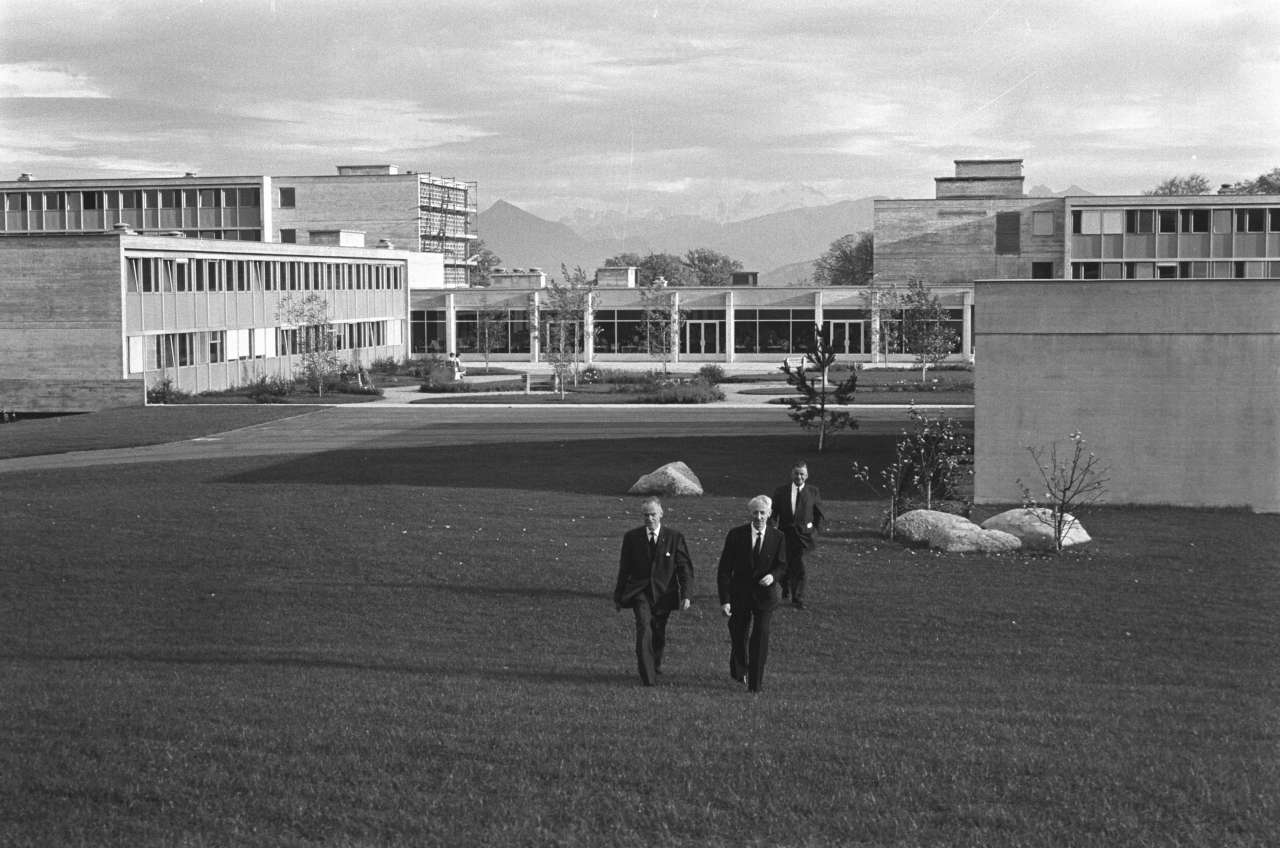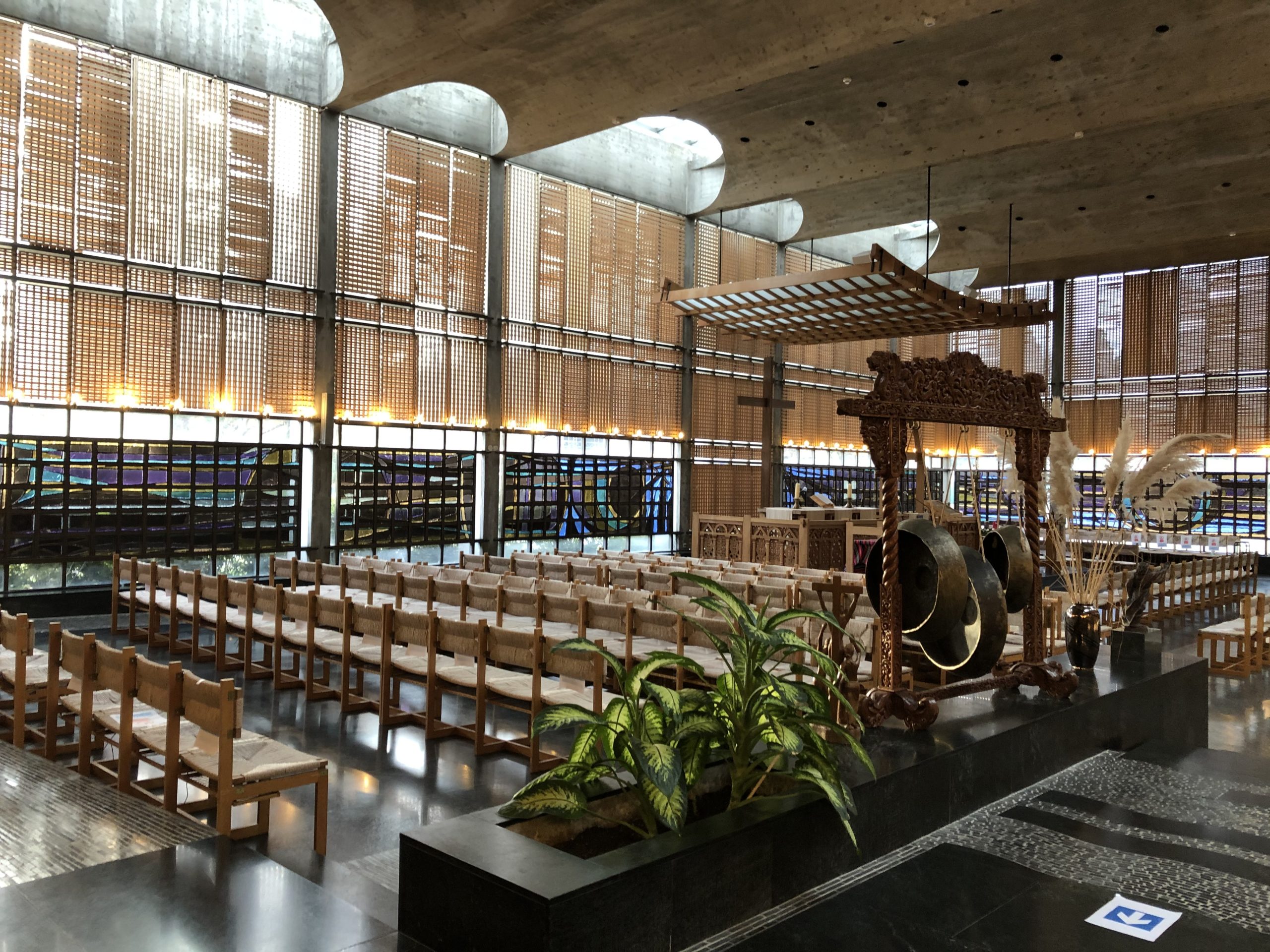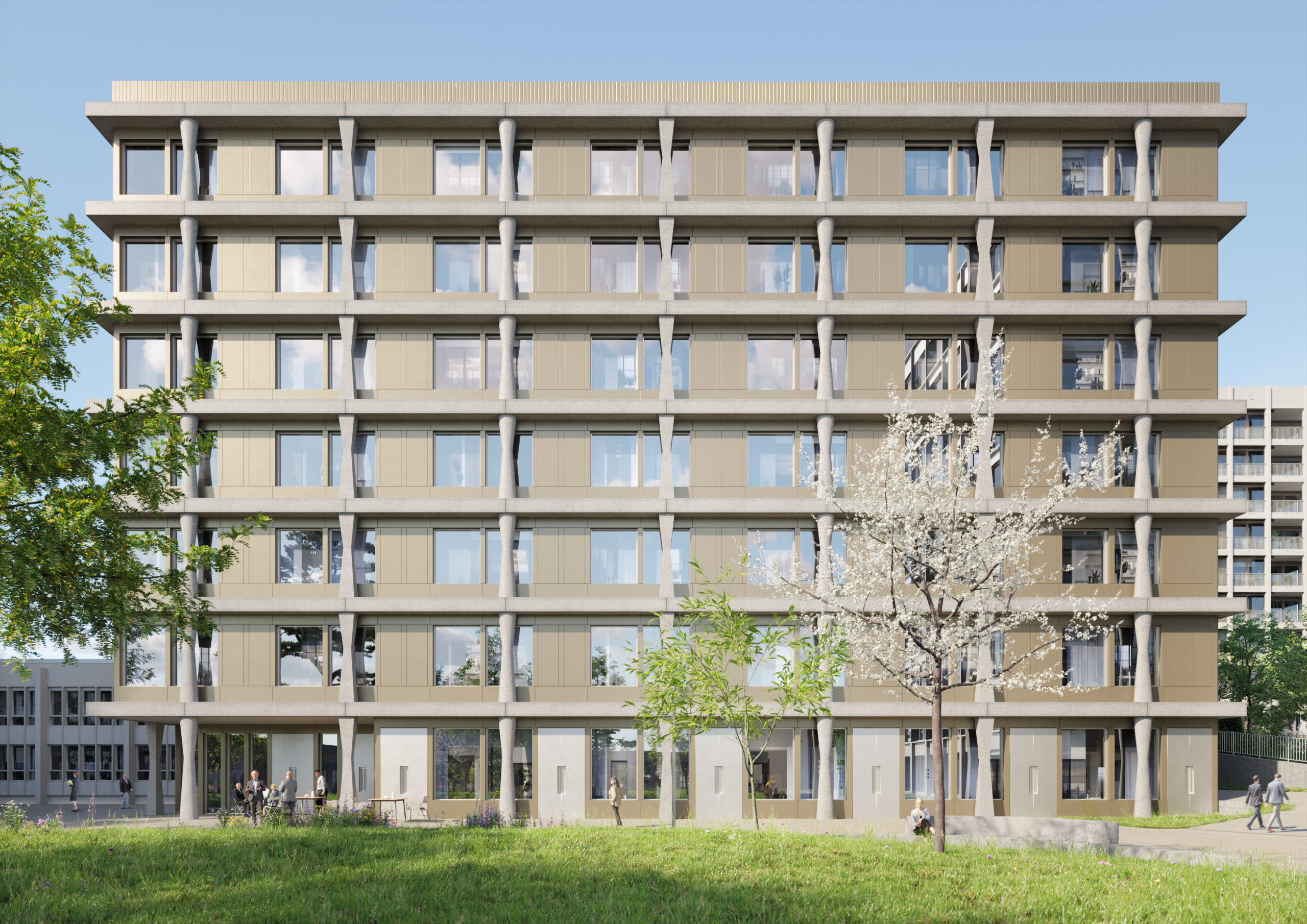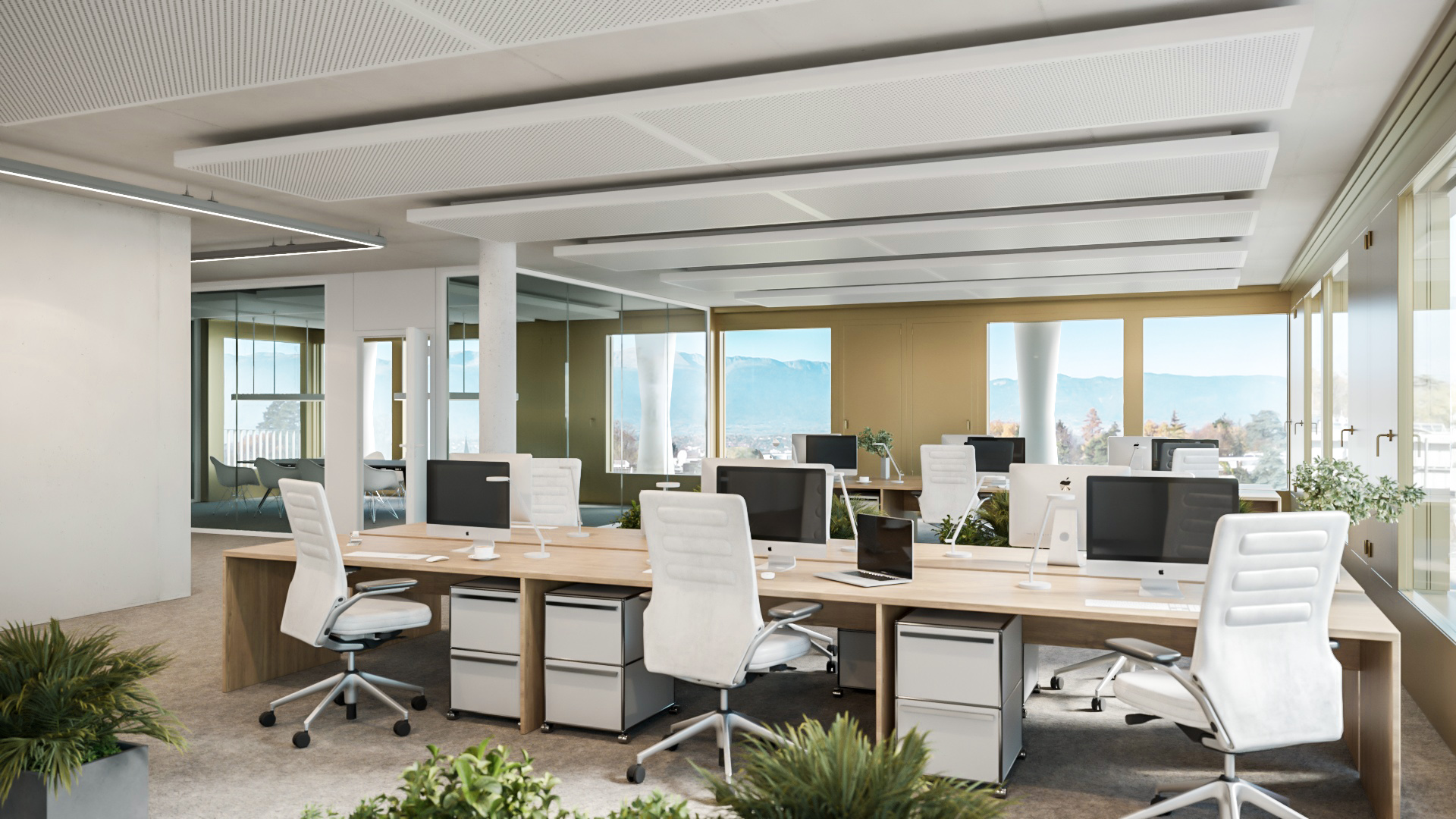“We imagined Stockholm as an office building where you feel as comfortable as at home”.
We interviewed Inès Lamunière, one of Switzerland’s leading architects. Today she talks to us about Stockholm and the upcoming renovation of the Ecumenical Centre.
A few word about Inès Lamunière
Inès Lamunière is a passionate and exciting architect and professor at the EPFL. She tackles both high-profile and more intimate projects with rigour, creativity and emotion. Her flagship projects include the renovation of the headquarters of the International Labour Office, the Lausanne Opera House and the new Geneva Cornavin underground station. Most recently, Inès Lamunière and her studio dl-a, designlab-architecture won the competition organised by Banque Pictet for the extension of its headquarters at Les Acacias in Geneva. An interview with an exceptional woman.
Inès Lamunière, please tell us a little about your background and your passion for architecture.
I’ve been in the profession for 40 years and I was born into it, so to speak, because my father, Jean-Marc Lamunière, was one of the leading figures on the Swiss architectural scene. As a result, I’ve developed and immersed myself in spatial experiences that nourish and excite me every day. In architecture, each project allows us to renew both our questions and our answers. Our experience and knowledge of the world around us gives us hope for innovation.
Your office has been commissioned to work on two Green Village projects. Could you tell us more about them?
As part of the Green Village neighbourhood plan and following a competition, we are working on two projects simultaneously. Firstly, we are responsible for the renovation and conversion of the historic World Council of Churches (WCC) building, which is now a listed building. We have also been commissioned by Implenia to define the architecture of the Stockholm administration building. What both buildings have in common is that they look out onto the Brugger Garden, also a listed monument, which forms the heart of the whole district and connects the two buildings.

How did you approach the project to renovate the Ecumenical Centre?
It’s a very interesting project. It was carried out in several stages and completed in 1967. Honegger Frères was responsible for the functional parts of the building, while the Danish architect Svend Erik Møller was responsible for the representative parts, including the remarkable ecumenical chapel. Overall, the building combines rationality and economy with strong symbolic identities.
The renovation is designed to preserve the building’s modern character. The entrance, the large central hall atrium, the chapel and the large conference room will be restored to their original state. Tailor-made offices for the Ecumenical Centre’s teams will be created in the areas previously used for obsolete purposes. The facades will also be renovated. The roof will remain green.

How did you imagine the integration of the Stockholm building into an ensemble such as Green Village?
Stockholm is at the heart of the future district and has a strong visual link with the historic WCC building. We have approached it in a special way, offering office space for sale as condominiums, looking for owners such as missions, consulates, players in international Geneva, as well as SMEs. Its volume, like its large floor plates and materials, stands out from the rest of the new district with a more assertive horizontal geometry and a pattern of load-bearing columns on the façade. At the heart of the neighbourhood, it should reflect the community character of the institutions that are located there.
What do you want from the architecture of the facades?
The building is defined by a series of external columns, which are distinguished between the “women’s” and “men’s” columns. The visual effect is a gentle blend that embodies community and diversity, alternating between circular and square columns.

What does it offer in terms of layout?
We wanted to offer interested companies a great deal of freedom in terms of layout by creating two cores and a central hall per floor to facilitate flexible partitioning. This layout allows for two different entrances while integrating commercial activities on the ground floor. The space between the cores allows views of the lake or the Jura mountains.
In this way, the building has a lower ground floor connected to public access via the street and an upper ground floor directly connected to the Brugger Garden.
What’s more, our initial aim was to create high ceilings. In Stockholm we’re at almost 3 metres, which gives an immediate feeling of space.
What was your architectural vision for Stockholm?
We gave the structure of the Stockholm building a peripheral vision, with load-bearing columns. This concept means that the floors are spacious and extremely flexible, especially in terms of partitioning. Private lift blocks could serve different owners independently, ensuring security and confidentiality within the building itself.
What is your aim in offering loggias in an office building?
The aim was to bring quality of life into an office building. Office facades are usually quite airtight, but in Stockholm we’re offering the possibility to open windows and be in contact with the outside world. The Brugger Garden will be a lively focal point, and the loggias on the upper floors will provide additional areas for relaxation and quiet. The building’s thermal envelope features large windows and metal-clad wood panels that can also be opened. In mid-season, occupants will be able to benefit from outside air. In winter and summer, they will be protected from the cold and heat.
What are the characteristics of the interior spaces?
From the inside, the building’s panels resemble window frames, allowing light to enter. In addition, a large raised floor allows all the electrical components to be integrated. This leaves the ceilings free, unless the user wishes to integrate acoustic panels. Despite this, the ceiling height remains very high, adding to the sense of space.

Stockholm is an office building that is partly designed as a residential building?
Yes, because I’m convinced that today’s office should feel like a home. If we want our employees to enjoy coming to the office, I believe they should feel as comfortable there as they do at home. They need a cosy, almost intimate atmosphere, even if they’re working in an open space. Carpets are important, sound needs to be absorbed and coffee corners are essential.
Designing office buildings is rewarding. It makes us think about professions and their commitment to the future of the planet, to a sense of community, to working together to integrate everyone into a society in perpetual motion. Housing sometimes follows more traditional models, perhaps because it has more to do with intimacy and the individual.
Sustainability is always a key issue, especially in Green Village, the first SEED sustainable neighbourhood in Geneva. What about the Stockholm building?
The sustainability of a building includes one undeniable criterion: its lifespan. No matter what anyone says, concrete is durable in the event of future renovations. What’s more, the cross-section of this building, with its high ceilings, allows for better ventilation, which increases the comfort and well-being of users. With a well-designed concrete structure, we can develop the building over time. With this in mind, we decided to maximise the use of recycled concrete and low-carbon cement throughout the building – a real innovation for a building of this size, and one that will have a major impact on reducing carbon emissions from construction in Stockholm. The building will also benefit from state-of-the-art certification, in particular SNBS GOLD and THPE-2000W.
In a few words, how do you see Stockholm?
It’s a building designed for a diverse community, with a variety of platforms and ways of working. Institutionally, it fits in perfectly with international Geneva and fully meets today’s environmental challenges.
